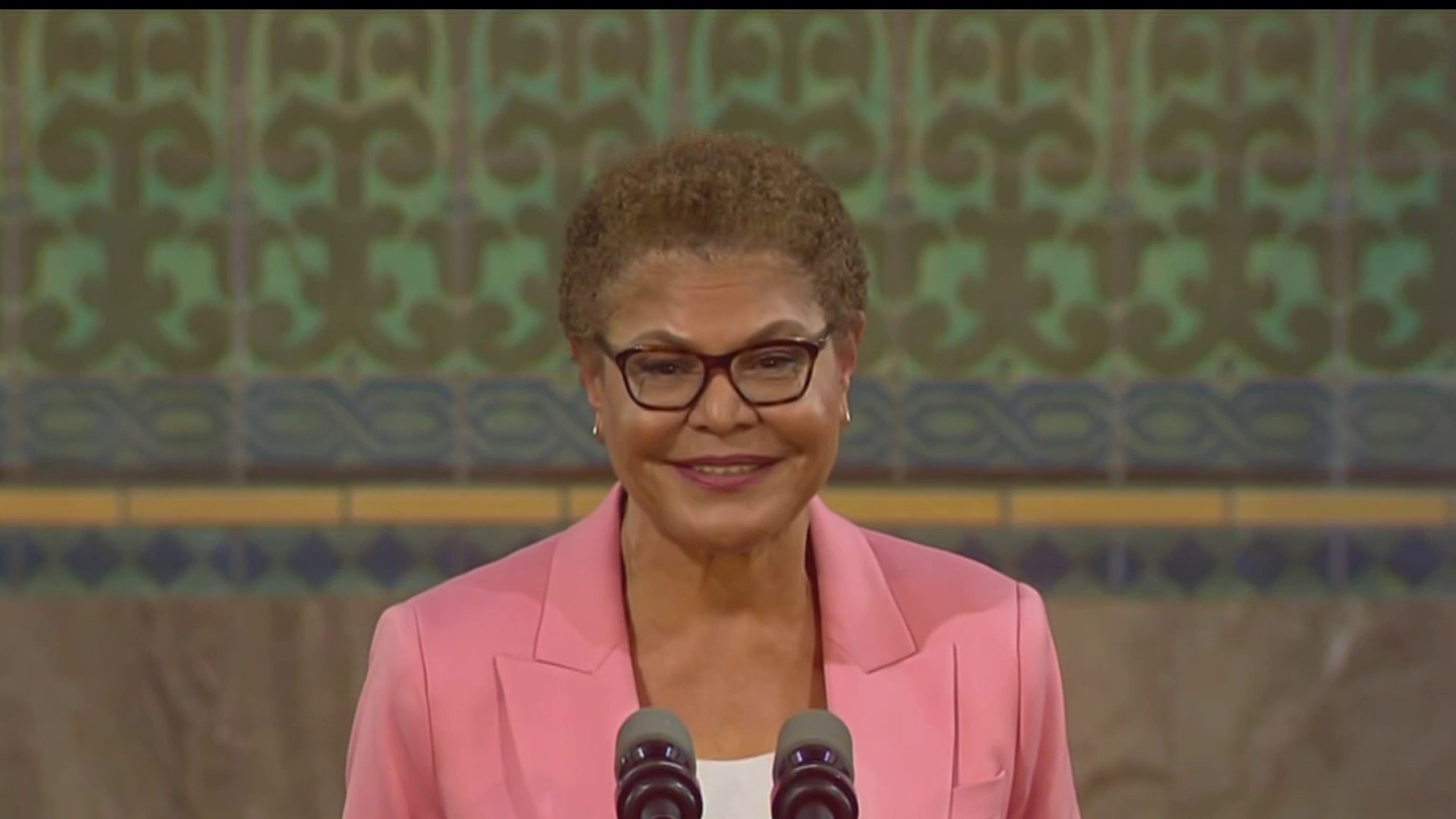Thousands gathered Thursday to celebrate the opening of USC Village, a $700 million development that combines housing for 2,500 students with ground-floor retail businesses and restaurants open to the public.
University officials said planning on the largest development in USC's 137-year history began a decade ago, with design and construction completed in about 3 1/2 years on the 15-acre site at Jefferson Boulevard and Hoover Street that formerly housed a dilapidated outdoor mall built in the 1970s.
More than 5,600 workers were involved in the 1.25-million-square-foot project, which includes Target and Trader Joe's stores, an Amazon store/pick-up center, more than a dozen dining options, a student fitness center, indoor parking for more than 1,500 bicycles, an intramural field and an 8,000-square-foot dining hall featuring stained-glass windows and gourmet food choices.
A Bank of America branch, yoga center, nail salon and shoe repair business are also located in the complex, which is dotted with nearly 400 trees and has underground parking for the public.
Faculty members will live among students in what are being called "residential colleges," which feature interior courtyards dotted with outdoor furniture and indoor meeting rooms designed to encourage residents to mix and mingle.
The centerpiece of the development is an acre-plus-sized piazza featuring a large water fountain a 20-foot-tall bronze rendering of Hecuba, Queen of Troy, the female counterpart to USC's famous statue of the Greek warrior Tommy Trojan in the central plaza of the campus.
Anchored by USC's new Annenberg Hall, the Village will serve as the "LA 2028 Media Village" for the summer Olympic games. The Media Village will offer members of the media "unprecedented convenience, state-of-the-art workroom facilities, and onsite support and catering services," LA 2028 officials said in a statment.
News
Top news of the day
About 75 percent of the ground floor of each building contains retail space and multipurpose classrooms, with students housed on the upper floors. Security will be tight in the dorm areas, with access via key cards and facial recognition scans. The entire complex will be closed to non-residents from 10 p.m. to 6 a.m.
"Safety and security was one of our key guiding factors when we planned and designed this complex," said Lloyd Silberstein, USC's vice president of capital construction.
"The public areas are available to everybody during the day. At night though, we close them down just like we do the rest of the campus," he said. "We've got 2,500 students living above, and their parents want to know they're safe."
He noted that each student housing area has a "private quad" that functions as a "back yard for kids. It's a safe place for them to hang out and socialize, and we'll plan events for them, barbecues, sometimes lectures there. It's a space that isn't available to the public. It's really not available to the rest of the university."
Silberstein said planners used architecture "to create a sense of community and also to expand the existing campus."
"All the residential buildings are organized around a central plaza ... We have broad, tree-lined pedestrian pathways that lead into that central plaza and also connect back to campus," he said. "The central plaza functions really like a town square. There's a great deal of outdoor seating. ... It's a great place to socialize and meet."
USC officials said the massive project was finished on budget and on time, in part through the use of a building technique in which 2,500 pre-cast exterior wall panels consisting of brick, grout, precast window surrounds, rebar and concrete were fabricated off-site, allowing workers to "skin" the six buildings in 11 months. The same process using traditional methods would have taken at least a year and a half longer, according to the project architects.
The development was fully funded by the private university, which made a $20 million contribution to the city's affordable housing trust, pledged to hire local workers through a partnership with the city and area unions, and relocated an iconic firehouse that was replaced with a state-of-the-art fire station.
"The entire USC Village is available to all USC students, whether they live here or not, and it's also available to our community. All of the retail is open for members of our community to use, and that's been a critically important part of the project," said Ainsley Carry, USC's vice president of student affairs.
"We're hoping that this creates housing for students here and frees up housing in the community for others," he said. "The $20 million contribution from the university to the city hopefully will help with regard to housing prices and we're also hoping that our options create employment opportunities for members of the community."



